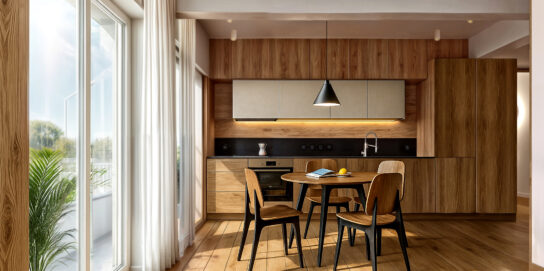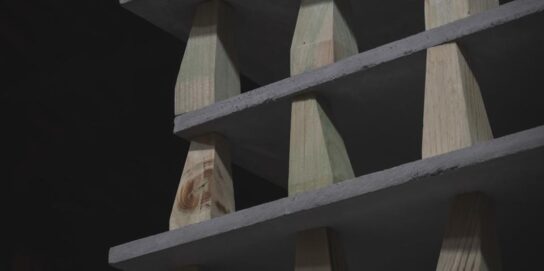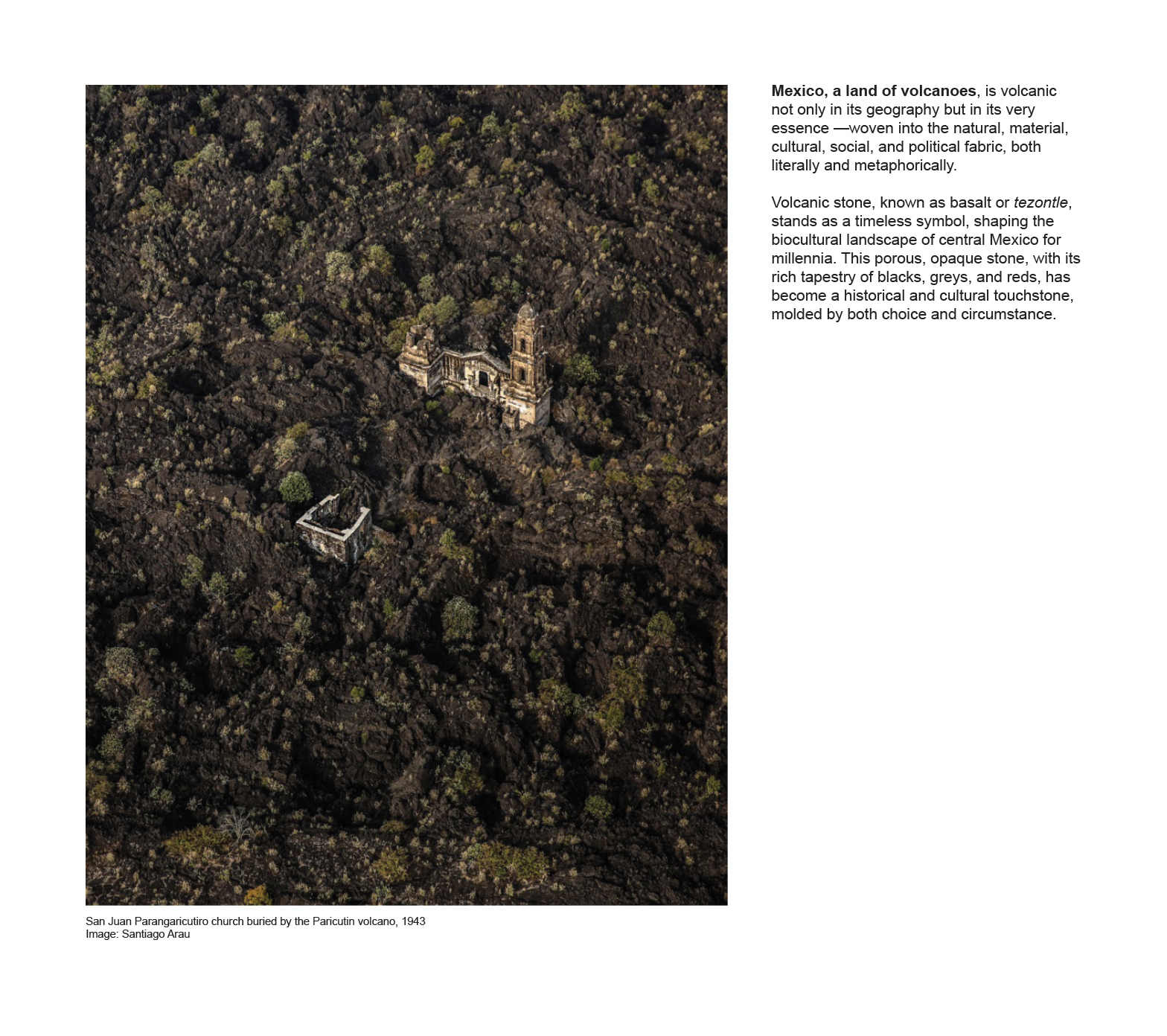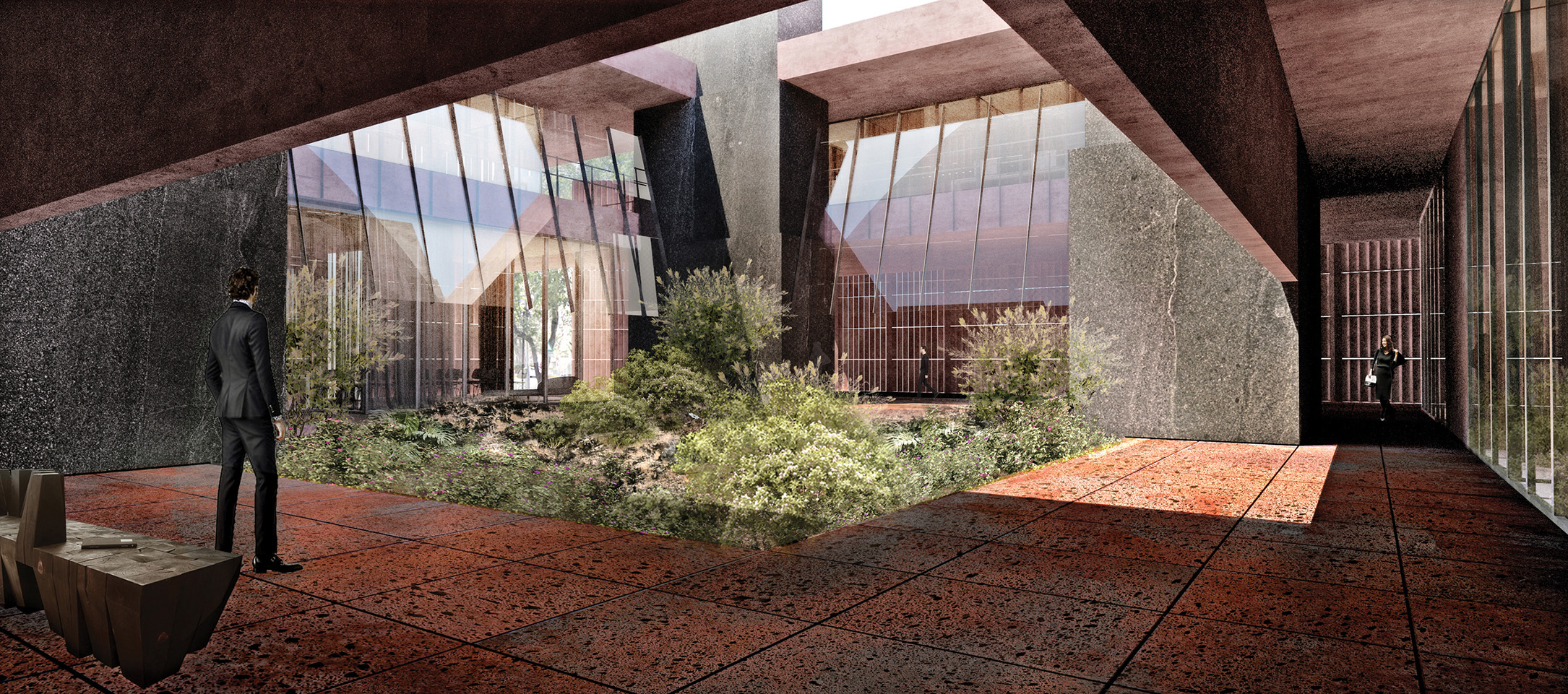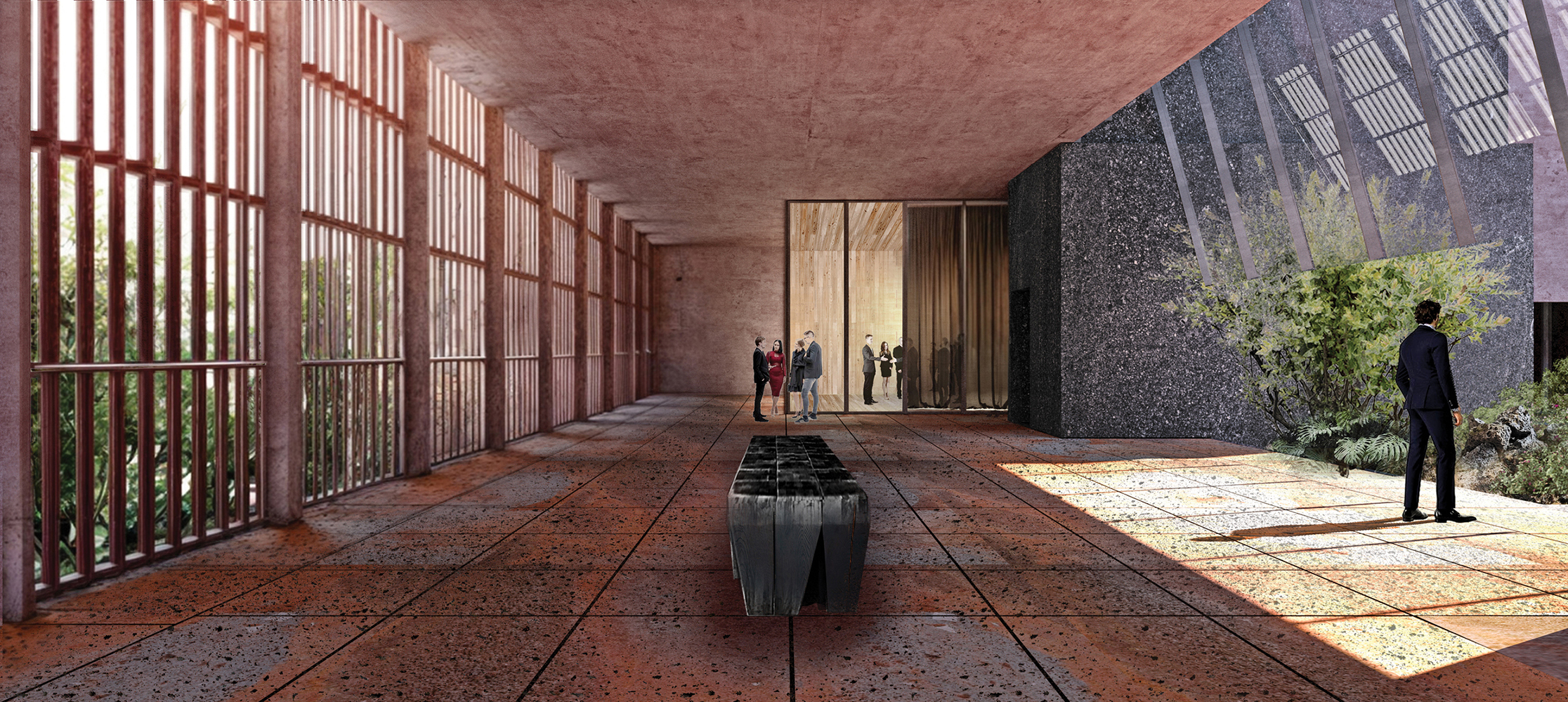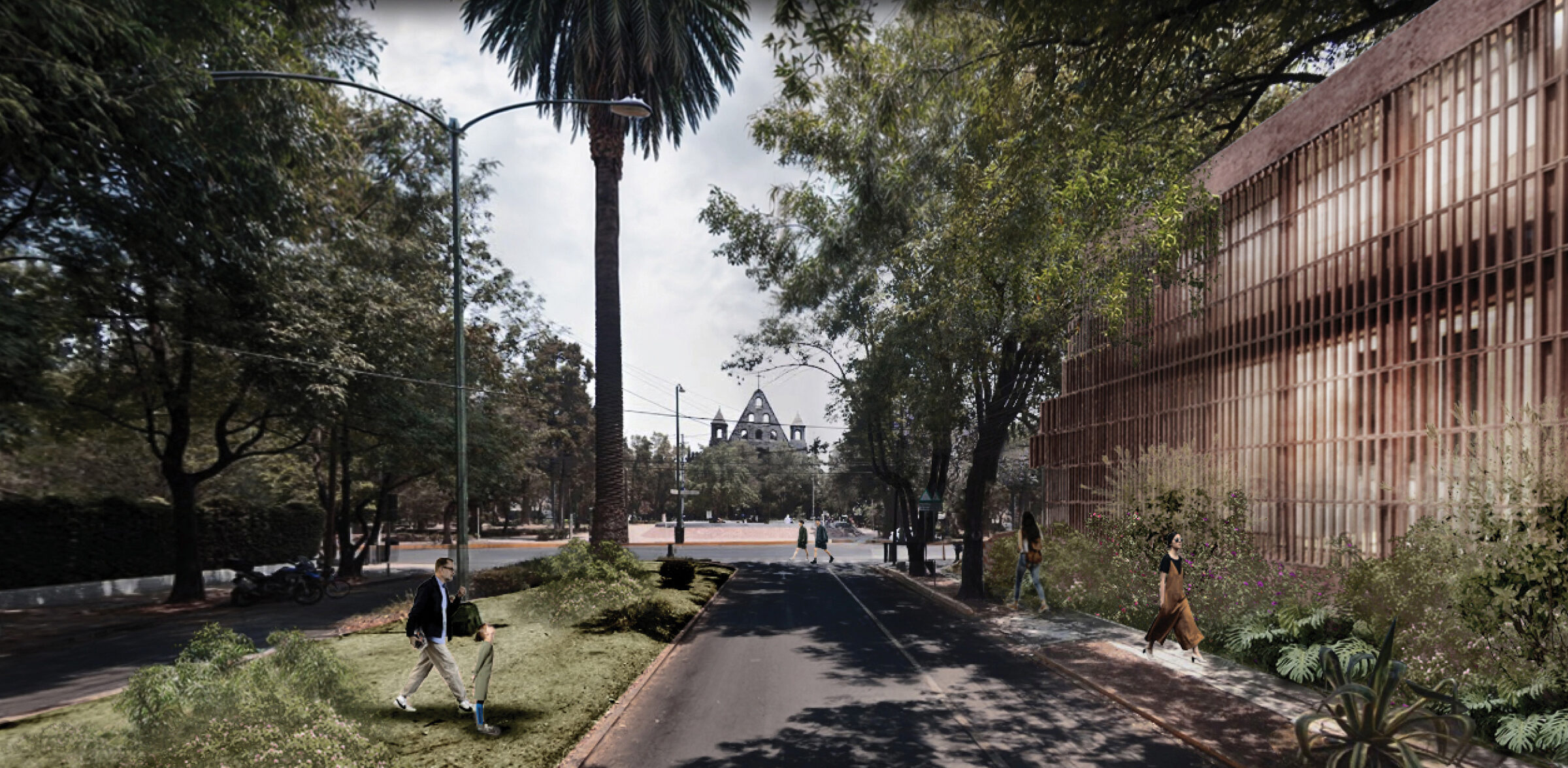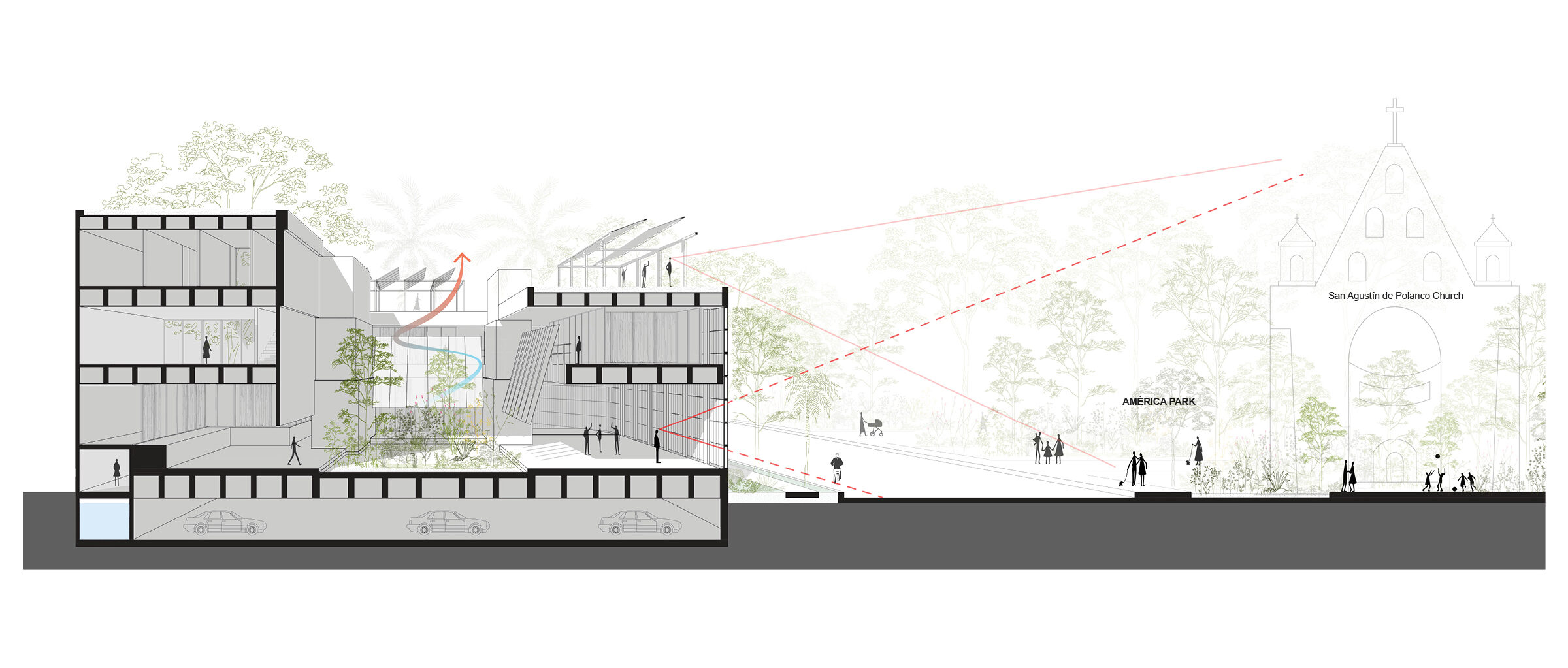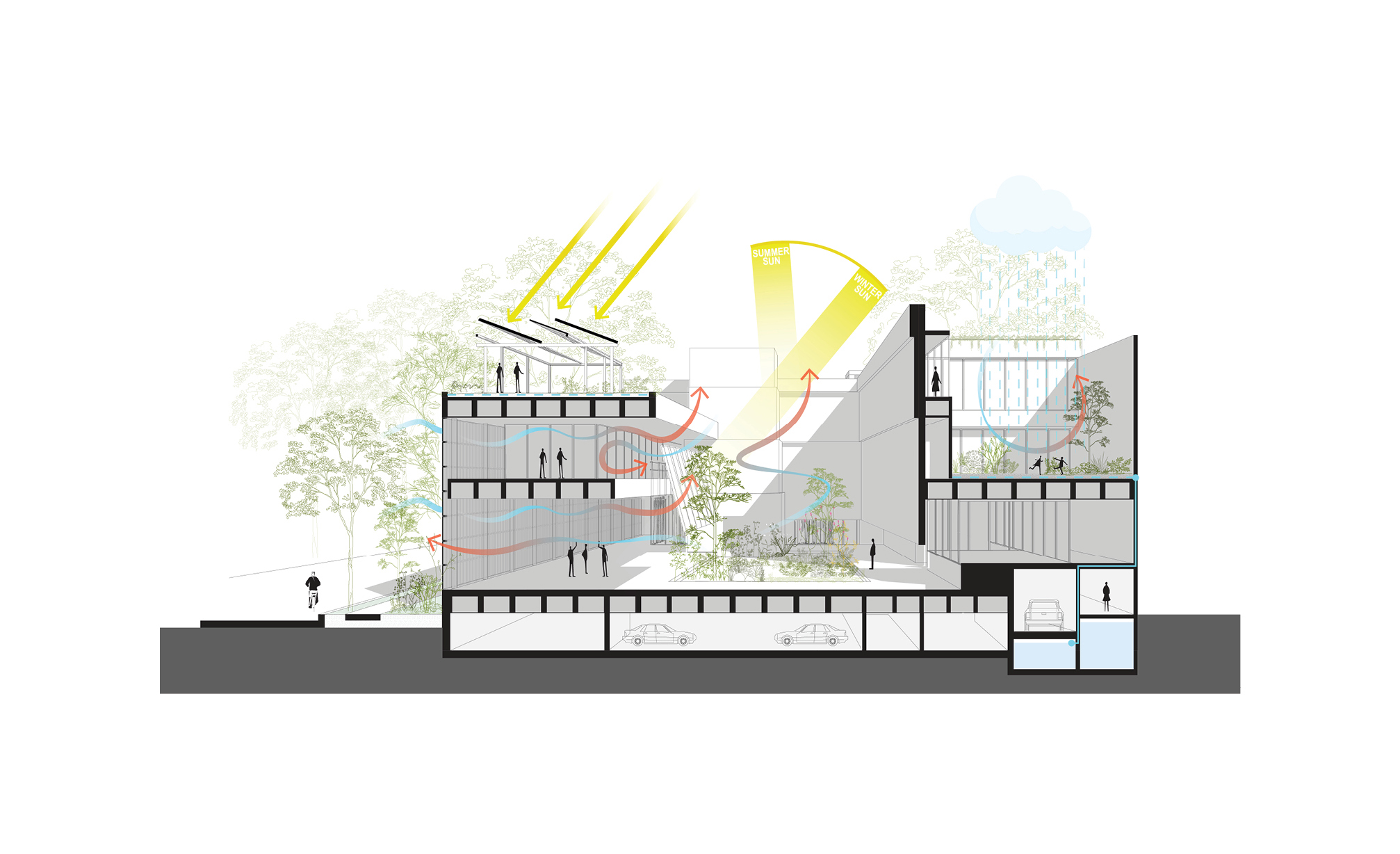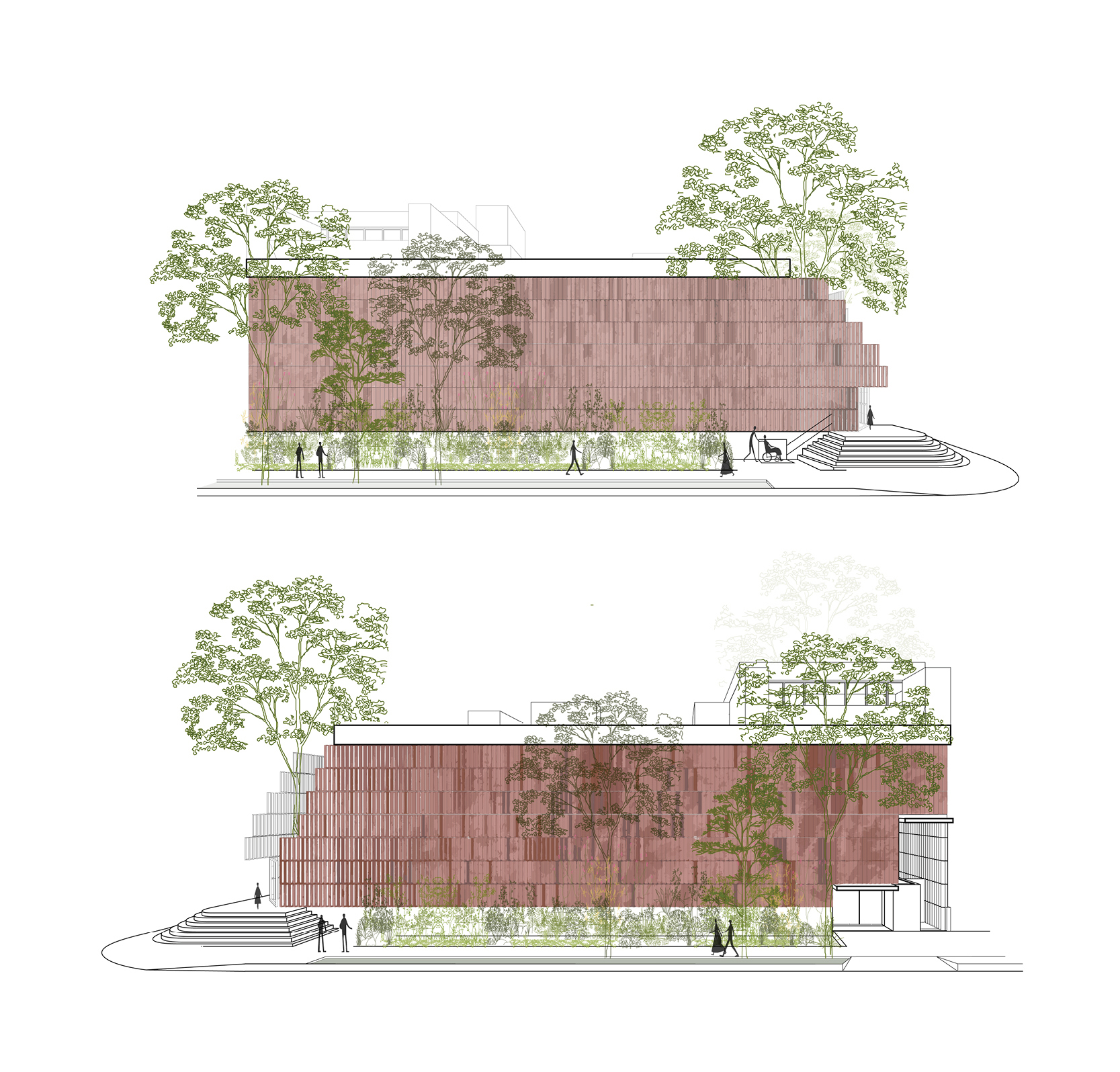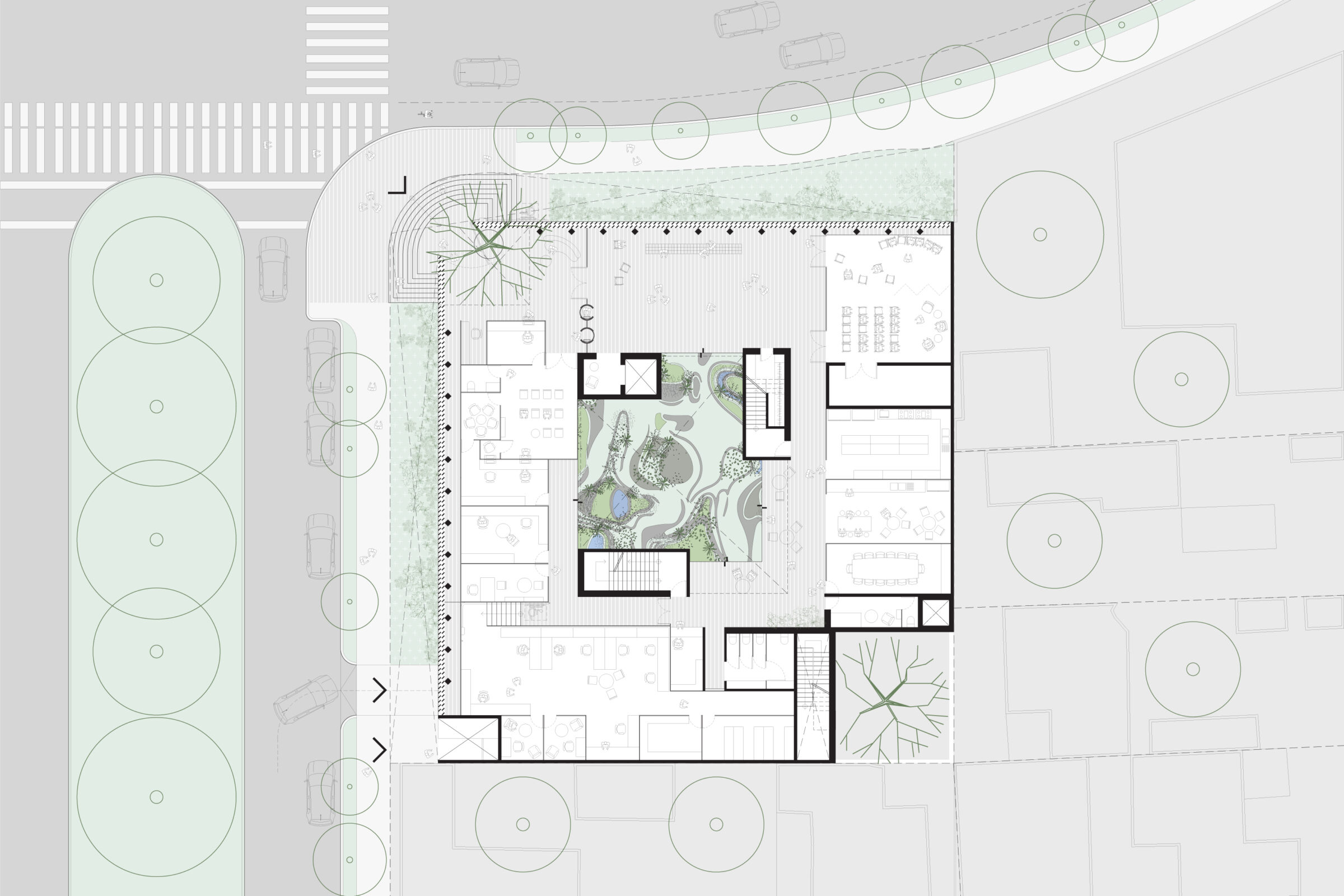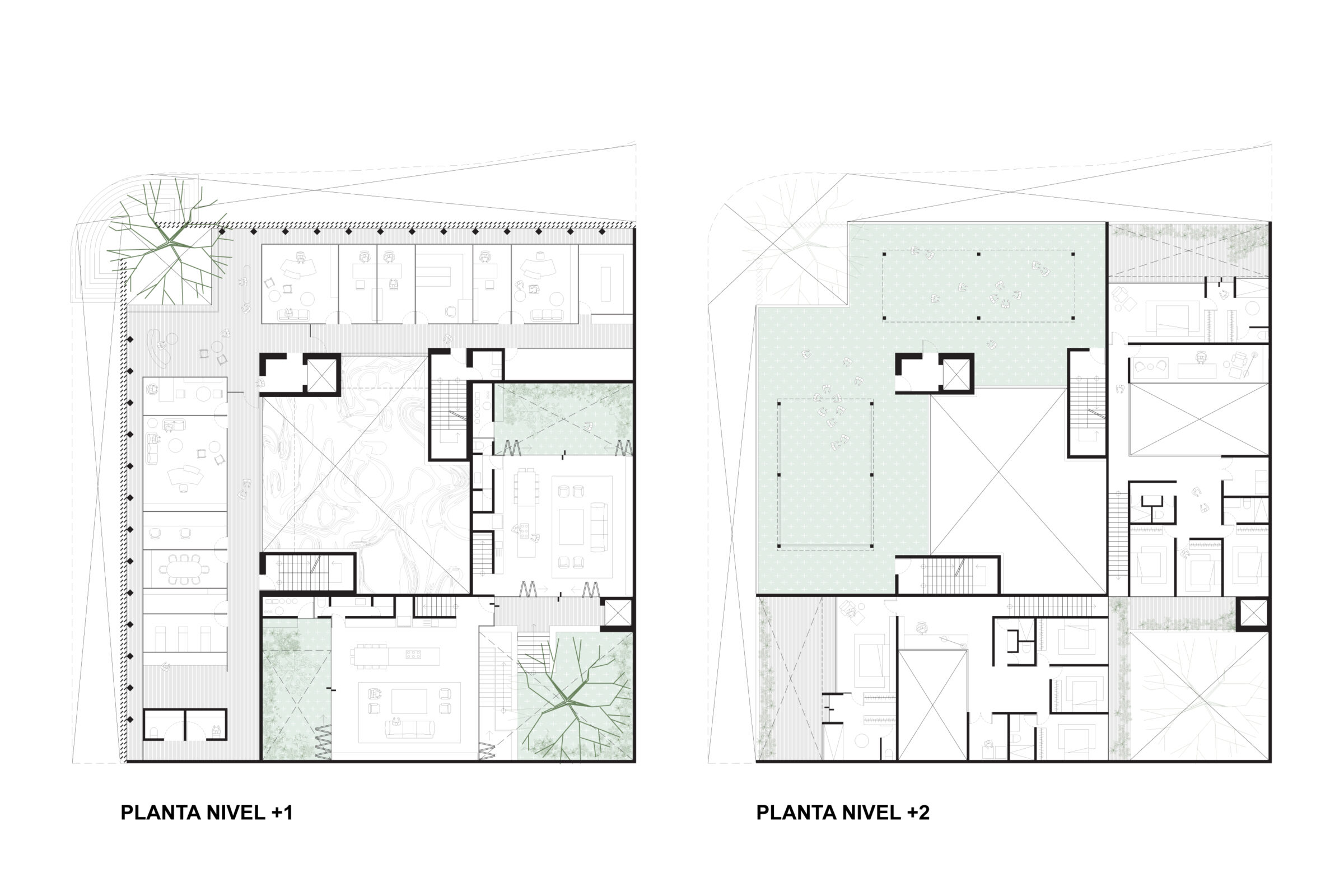EDAA scope: competition, finalist
Area: 2,086 m² (22,450 ft²)
Site area: 1,208 m² (13,000 ft²)
Design team: Luis Arturo García, Juan Hernández, Hans Álvarez, Christian Morales, Josué Granados
Administrative team: Patricia Lazcano, Jorge Hernández
Technical team: BauArt Construcción
Client: Belgian State, the Federal Public Service Foreign Affairs, Foreign Trade and Development Cooperation
Mexico, a land of volcanoes, is volcanic not only in its geography but in its very essence—woven into the natural, material, cultural, social, and political fabric, both literally and metaphorically.
Volcanic stone, known as basalt or tezontle, stands as a timeless symbol, shaping the biocultural landscape of central Mexico for millennia. This porous, opaque stone, with its rich tapestry of blacks, greys, and reds, has become a historical and cultural touchstone moulded by both choice and circumstance.
In the new Belgian embassy nestled in Mexico City, a skin of red volcanic stone that rises from the vegetation, envelops transparent flowing spaces. This seemingly solid yet highly permeable structure emerges as a lattice that cradles the perimeter, offering privacy from the vibrant life of the street while shielding against rain and direct sunlight. All the while allowing a gentle flow of wind and natural light to weave through its corridors. It creates a continuous dialogue of sight and sound with its privileged urban surroundings. The corner in pancoupé gracefully opens onto the verdant América Park, where this controlled relationship becomes a metaphor for institutional rigor coexisting with the vibrant transparency of Belgian democracy.
The red tezontle terrazzo lattice glows from within, like a jewel of stone!
Massiveness and Fluidity.
Belgium, a democratic and liberal kingdom, has been forged in the crucible of unity, tolerance, and a deep appreciation for its cultural and ideological differences. In contrast, Mexican culture presents itself as a mosaic of unresolved identities where life revolves around shades of grey, the unspoken, and the accidental. This new building for the embassy embodies these values through spacious, ventilated areas that dance between transparency and light, harmonizing with the stacked solid stone volumes that rise from the courtyard. Each corner has been crafted with precision, creating a sanctuary of accessibility devoid of secrets. In its corridors, life unfolds through encounters and serendipities, where the spirit of the "bon vivant" intertwines with institutional efficiency.
The embassy breathes alongside the lush vegetation and temperate sub-humid climate of Mexico City, with an average annual temperature of 17 degrees Celsius. The warm days, often exceeding 25°C grace the months from March to May, while January brings its cool and crisp nights. In this city, architecture becomes a warm embrace of the climate, inviting one to relish its pleasant days and the gentle summer rains that grace the afternoons from June to October; the natural world beckons, and the built environment responds in harmonious concert.
Five Patios.
The design of the embassy and its diplomatic residences unfurls like a delicate origami of five patios, the central one being the heart around which the entire edifice revolves. Spacious, airy corridors lead to every office, maintaining a close bond with the central courtyard. Nature infiltrates the experience of the embassy, sheltering workspaces within a climate-controlled sanctuary that guards against the sun and rain, allowing for cross-ventilation through open doors and windows, while light and fresh air naturally illuminate and refresh the corridors.
Two intermediate patios cradle the site’s most significant trees: at the front corner stands a jacaranda, its purple blossoms in spring welcoming passersby into a generous access patio that opens graciously to América Park. At the inner heart of the site, a grand ash tree casts shade over the main garden and entrance to the diplomatic residences.
The two smaller patios offer private retreats, one for each residence that stretches from the inner patio of the ash tree to the street, passing through their internal green patios. Access to these homes unfolds through the garden patio of the ash tree, reached from the street via a passageway bathed in natural light at both ends, its curves echoing the elegant lines of Art Nouveau.
Materials.
Red. The facade reveals a rhythmic dance of pulverized volcanic stone, meticulously reconstructed to form a modular lattice of red tezontle terrazzo. The warm hues of this lattice blend seamlessly into the exposed concrete structure, tinted with red undertones, accompanied with rectified red tezontle flooring. Here, the ancient tradition of basalt craftsmanship intertwines with modern industrial technology, creating replicable lattice modules that resonate with history.
Black. The central patio, covered with black raw basalt, cradles endemic vegetation, flanked by three monolithic sculptures of black volcanic stone terrazzo. Small pools form during summer rains, only to dry in spring, a testament to the seasonal shifts. Some of these pools remain as year-round fountains, oxygenating the treated and rainwater while refreshing the warm air during the dry spring months.
Yellow. Inside, the climate-controlled spaces of the offices are elegant glass boxes framed in natural steel, floor to ceiling sliding curtains allow for individual privacy while creating an acoustic buffer. Mexican oak flooring and ceilings that glow in soft yellow tones evoke warmth and comfort.
Three materials from Mexico's rich construction tradition resonate in vibrant harmony with the Belgian flag: red, black, and yellow.
Basalt, concrete, glass, steel, and wood are all true and honest materials, locally resourced, easily maintained and recyclable.
A Fluid Relationship: the City, the Patios, the Offices.
This new embassy weaves a bridge between the enduring material presence of basalt in Mexico and the democratic transparency of Belgium, connecting the artisanal construction traditions of Mexico with the industrial efficiency and quality that defines Belgium. It stands as a testament to architecture that embraces the privileged climate of Mexico City, seamlessly merging with the energy efficiency that characterizes Belgian design.
